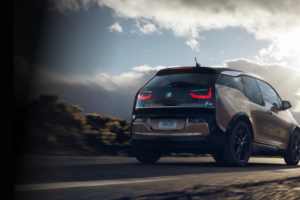With its efficient engine, state-of-the-art chassis, innovative technologies, and progressive design, the BMW 1 Series are perfect for those looking for a cool and compact car. It is available in different body styles, and one of the most popular is the BMW E88.
The BMW E88 was produced from 2004 to 2013 and is sometimes referred to as the E8x. It is a compact convertible with a straight shoulder line and muscular wheel arches.
It has a rear-drive configuration, a diesel or petrol engine, and automatic and manual transmission.
Read on to learn more about the BMW E88, as well as its key features and technical specs.
About the BMW E88
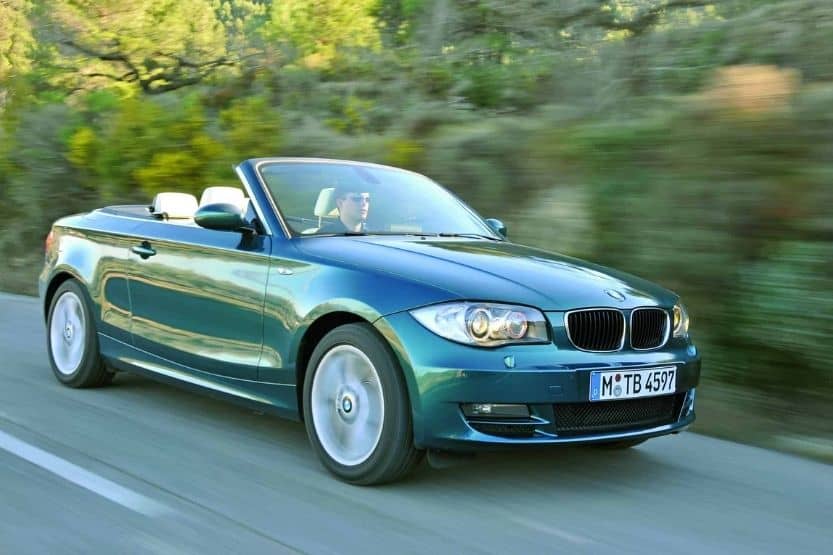
The E88 is a part of the BMW 1 Series, along with the E81 (three-door hatchback), E87 (five-door hatchback), and E82 (coupe). This two-door, four-seater convertible was introduced in March 2008 at the Geneva Motor Show.
Only the coupe and convertible versions are available in the United States.
A sporty convertible, the design of this model was largely influenced by the BMW 2002.
In 2011, with the introduction of the BMW 2 Series, BMW removed the coupe and convertible body types from the 1 Series. The company also replaced them with the BMW F22.
The BMW E88 is available only in rear-wheel-drive traction. It is the configuration of choice amongst luxury car manufacturers because it balances weight better. In turn, it optimizes handling and improves the car’s overall performance.
BMW E88 Specs and Features
The E88 packs a plethora of innovative, top-notch specs and features, which is what you can expect from a luxury car manufacturer such as BMW.
1. Engine
The heart and brain of any car, the engine, determines the overall performance. It converts fuel into motion. The BMW E88 has a powerful engine, the specific type of which will differ depending on the trim level:
- 118d: 2-liter, 4-cylinder, turbocharged
- 118i: 2-liter, 4-cylinder, naturally aspirated
- 120d: 2-liter, 4-cylinder, turbocharged
- 120i: 2-liter, 4-cylinder naturally-aspirated
- 125i: 3-liter, 6-cylinder naturally-aspirated
- 135i: 3-liter 6-cylinder, turbocharged
2. Horsepower
The horsepower for various BMW E88 models is as follows:
- 118d: 143 HP
- 118i: 143 HP
- 120d: 177 HP
- 120i: 170 HP
- 125i: 218 HP
- 135i: 306 HP
3. Torque
The torque produced by the BMW E88 engine is as follows:
- 118d: 221.27 lb.-ft @ 1,750 to 2,500 rpm
- 118i: 140.14 lb.-ft @ 4,250 rpm
- 120d: 258.15 lb.-ft @ 1,750 to 3,000 rpm
- 120i: 154.89 lb.-ft @ 4,250 rpm
- 125i: 199.14 lb.-ft @ 2,500 to 4,250 rpm
- 135i: 295.02 lb.-ft @ 1,300 to 5,000 rpm
4. Fuel Consumption
Measuring fuel economy is important to determine how expensive it is to use a car. The goal is to have efficient fuel consumption to save money in the long run.
The mileage of various BMW E88 engines is as follows:
- 118d: 40.55 mpg (urban), 53.46 mpg (extra urban), 48 mpg (combined)
- 118i: 27.67 mpg (urban), 47.04 mpg (extra urban), 37.34 mpg (combined)
- 120d: 36.75 mpg (urban), 54.7 mpg (extra urban), 46.12 mpg (combined)
- 120i: 26.43 mpg (urban), 45.23 mpg (extra urban), 35.64 mpg (combined)
- 125i: 20.1 mpg (urban), 39.2 mpg (extra urban), 34.87 mpg (combined)
- 135i: 17.69 mpg (urban), 33.13 mpg (extra urban), 30.05 mpg (combined)
5. Top Speed
While the BMW E88 was built to perform, its top speed is far from what you can expect from high-performance sports cars.
- 118d: 129.25 mph
- 118i: 130.49 mph
- 120d: 137.94 mph
- 120i: 136.7 mph
- 125i: 147.89 mph
- 135i: 155.34 mph
6. Acceleration
This is a measurement of how fast a car can go from zero to a certain speed. In the specs below, we measure the acceleration of the BMW E88 from zero to 62 mph.
- 118d: 9.5 seconds
- 118i: 9.3 seconds
- 120d: 8.1 seconds
- 120i: 8.4 seconds
- 125i: 6.8 seconds
- 135i: 5.6 seconds
7. Curb Weight
This is the weight of the car without the passengers and only the basic parts. This weight includes all original factory components.
- 118d: 3,251.82 lbs.
- 118i: 3,097.49 lbs.
- 120d: 3,328.98 lbs.
- 120i: 3,152.61 lbs.
- 125i: 3,328.98 lbs.
- 135i: 3,527.4 lbs.
BMW E88 Design
One of the biggest selling points of the BMW E88 is its design. It is beautiful, but it does not work for everyone. For instance, it does not appeal to those who prefer more curves than a boxy body.
A lot of the cabriolets look a bit awkward with the hood down. This isn’t the case with the E88. It has a short tail and long bonnet, which makes it look like a stylish sportscar.
In 2011, BMW introduced several improvements in the styling of the E88, such as new taillights, headlights, and bumpers.
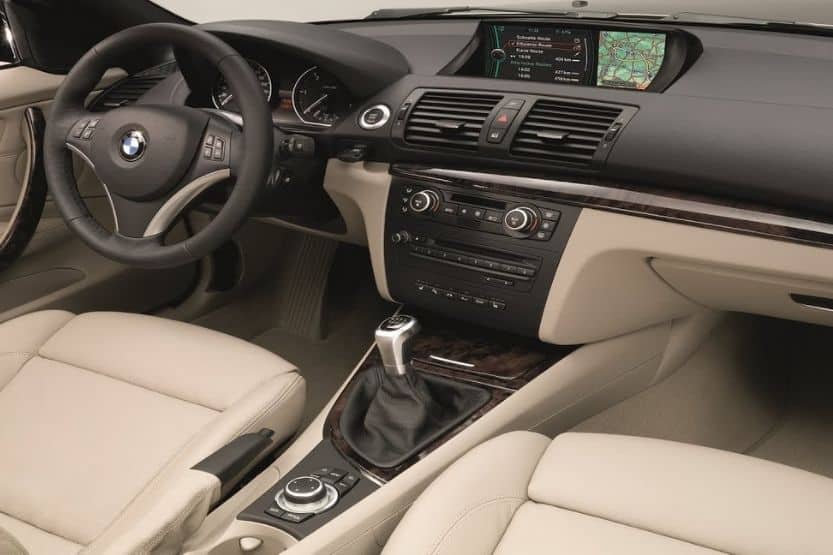
The cabin quality and design are also notable, making it comfortable despite the small rear. From the leather upholstery to the mood lighting, this car has an elegant interior.
BMW E88 Cost
The BMW E88 will vary depending on where you are from and the features of the specific model. However, since it is a part of the first generation of compact cars and convertibles from BMW, it is cheaper than today’s models.
If you are on a budget, the BMW 118d is the right choice, the E88 entry-level. It costs $40,000. On the other hand, if you want the best specs and performance, then be ready to shell out approximately $65,000 for the 135i, the top-of-the-line model.
Below is an excellent BMW E88 review that highlights the various specs and features:
Pros and Cons of the BMW E88
Is the BMW E88 the right car for you? To answer this question, you must be familiar with its pros and cons. Even if it is from a manufacturer as reputable as BMW, it has a few drawbacks you should know about.
The Good
Here are some of the most compelling reasons why the BMW E88 makes a nice car.
1. Affordable Convertible
Those on a budget will immediately shun the idea of buying a BMW car. Luckily, the E88 is perfect for those looking for an affordable luxury car. It is still more expensive than your average sedans, but this entry-level model is cheaper than its BMW siblings.
2. Roof Closes in a Snap
Opening the roof of this convertible happens in almost an instant. It takes approximately 18 seconds before the roof is completely flat. You can do this even when the car is running at 25 mph.
3. Low Engine Noise
Driving a convertible can be annoying when the roof is down, and you can hear the loud engine noise. The E88 addresses this issue by designing a powerful engine that does not generate a lot of noise even when driving the car at top speed.
4. Generous Room for Tall Drivers
Especially when you leave the roof open, there is generous space to accommodate even tall drivers comfortably. It also has several steering wheel adjustments, so you can customize the fit depending on what you are most comfortable with.
5. Option for Petrol or Diesel
You can choose from different trim levels, which will have varying engines. From the cost to fuel efficiency, you can pick which engine is more suitable to your liking.
The Bad
To be fair, let’s also look at some of the potential issues with the BMW E88.
1. Boxy Styling
If you are looking for a luxury car with seamless curves, the E88 is not for you. The transformation from a coupe to a convertible gave the car messier lines and an overall boxier appeal. It may not have the sexiness you are looking for.
2. No Rear Air-conditioning
It’s fresh and windy when the roof is down, but when it isn’t, those at the back may complain of discomfort on a scorching day. It does not come with rear air-conditioning vents.
3. Small Legroom at the Back
Another problem at the rear of the car is the minimal legroom. If you have tall passengers, their legs might end up cramped.
Is Charge Pipe Same as Boost Pipe?
Most Notable Rivals of the BMW E88
If the BMW E88 is not for you, below are some of its most popular rivals worth looking at. They are also from reputable manufacturers, so we are confident that the quality and performance are second to none.
1. Mazda MX-5
For a sexier alternative to the BMW E88, it is hard to go wrong with the Mazda MX-5. However, unlike the E88, it is only a two-seater.
One of its highlights is its even weight distribution, emphasizing the needs of every driver. This improves the car’s handling and performance while also addressing safety concerns.
With prices starting at $26,830, this is an affordable option for a convertible. It is available in three versions – Sport, Club, and Grand Touring.
2. Volkswagen Golf Cabriolet
The Cabrio version of the infamous Volkswagen Golf entered the market in 1979 in the Geneva International Motor Show. It was the first car with a permanent rollover bar. The first model had a front-wheel drive, four seats, and an economic engine.
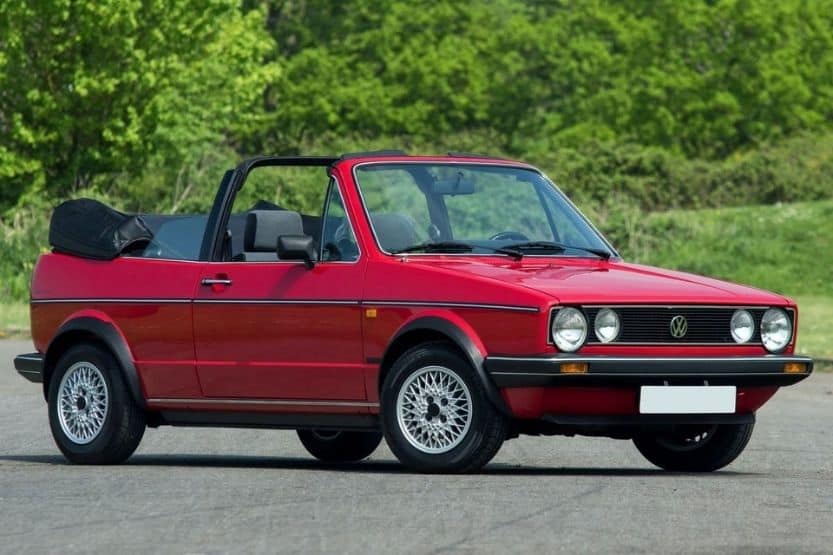
To keep up with the competition, the Golf Cabriolet was radically redesigned before stopping production in 2016. Despite all these efforts, we would say that the BMW E88 is still a more notable option.
3. Peugeot 308CC
Like the BMW E88, this is also a four-seater convertible. They share the same drawback as well – it is a bit tight at the rear, which is quite uncomfortable for larger passengers.
One of its main differences with the BMW E88 is that the folding roof is metal, making it smoother. It is a bit heavier, and hence, closing it can be quite slow, but the difference in speed is hardly noticeable. Unlike a soft fabric top, the mater material manages noise better.
A combination of a coupe and cabriolet, this car can cost anywhere from $35,970 to $42,970, depending on the specific body type you will pick. Its price is one of its biggest advantages over the BMW E88. However, the latter still reigns supreme if the style is your main consideration.
4. Renault Megane Cabriolet
The first generation was unveiled in 1997, and since then, there were six generations. The latest was in 2014 with a wide array of improvements to compete with the newer cabrios available in the global market.
It also has four seats, similar to the configuration of the BMW E88. It has a top speed of 124 mph and an acceleration of 11 seconds. Its technical specs are not as impressive as the E88. Nonetheless, this is still an alternative worth considering.
5. Audi A3 Cabriolet
Available in three trims – Attraction, Ambition, and Ambiente – the Audi A3 Cabriolet is one of the most beautiful competitors of the BMW E88. Like the latter, the rear seats are also small, which seems to be a common theme in many cabriolets.
It comes with a fully automatic fabric hood, which can open in an instant – 18 seconds to be exact, same with the E88.
With a stylish interior, this is an excellent car for those who value elegance. More so, it has state-of-the-art features, including an electrically retractable infotainment system, an audio virtual cockpit, adaptive LED lighting, and autonomous emergency braking.
BMW 114d Tech and Performance Overview
Conclusion – BMW E88
The BMW E88 is a high-performance convertible designed to turn heads on the road. A part of the BMW 1 Series, this two-door and four-seater car has a remarkable engine, great fuel economy, and astounding design.
Produced from 2008 to 2011, the car also has its fair share of problems. From its boxy styling to small legroom, it has a few cons, but they are not enough to overshadow the fact that it is impressive in more ways than one.
In an industry where large cars dominate, the E88 convertible is a fresh take. However, getting your hands in this car is quite a challenge. Consider yourself lucky if you find this rare gem! Driving this cabio is sure to be a treat!
Related reading:

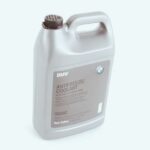
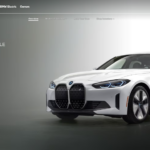
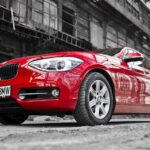

![What Is DTC in a BMW [DTC Warning Light and Button Explained] what does the dtc light mean on a bmw](https://roadsumo.com/wp-content/uploads/2022/05/what-does-the-dtc-light-mean-on-a-bmw-150x150.jpg)
![BMW Drivetrain Malfunction [Causes, Reset, and Repair Cost] bmw drivetrain malfunction causes](https://roadsumo.com/wp-content/uploads/2022/03/BMW-drivetrain-malfunction-causes-150x150.jpg)
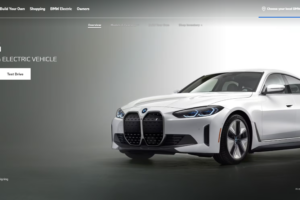
![Read more about the article What Is DTC in a BMW [DTC Warning Light and Button Explained]](https://roadsumo.com/wp-content/uploads/2022/05/what-does-the-dtc-light-mean-on-a-bmw-300x200.jpg)
